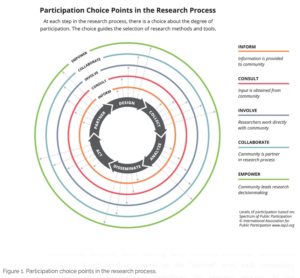Quantitative Research
As described by Ghanad, A. (2023), quantitative research seeks to establish a knowledge and understanding of numerous assumptions that have been developed in a study. The research involves quantifying things and asking questions such as “how long”, “how many”, and “the degree to which”. There are four identified quantitative research methods, namely:
1. Experimental Research
Also known as intervention research or group comparison research. It is a technique used in quantitative research to assess if an activity or materials affect participant outcomes. The researcher measures the effect by assigning a single set of actions to one group, which is called the intervention, and denying the set of actions to the other group.
2. Correlational Designs
To identify variables that have a connection in a way that a change in one affects a change in the other.
3. Descriptive Research
In nature, descriptive research could be either quantitative or qualitative. This kind of research involves quantitative data that can be collated in numerical form, like test scores or the number of times an individual uses a specific feature of a multimedia program, or it can explain categories of data, like gender or patterns of communication while using technology in a group setting. While quantitative research creates more consideration of the problem. Before researching why something happens, there is a need to understand how, when, and where it happens. Three main types of descriptive research are survey, case study, and observation.
4. Causal-Comparative/Quasi-Experimental Research
Extremely like actual experiments, but with a few important distinctions. The groups are not being assigned randomly; the researcher needs to use naturally formed or pre-existing groups.
Qualitative Research
Quoted from Ugwu, C. N., Eze, V.H.U. (2023) “The aim of qualitative research is to gain a comprehensive understanding of social phenomena in their natural environment. It relies on the direct experiences of people as meaning-making agents in their daily lives and focuses on the why rather than what of social phenomena”. There are five identified qualitative research approaches, namely:
1. Grounded Theory
To investigate a specific phenomenon or process and develop new theories that are founded on the gathering and examination of empirical data.
2. Ethnography
A type of qualitative research that entails becoming fully immersed in a particular community or organisation to closely observe people’s behaviour and interactions.
3. Action Research
To improve practice while examining the effects of the action that was taken.
4. Phenomenological Research
Phenomenological research investigates experience to learn more about how individuals perceive those experiences.
5. Narrative Research
Emphasises life stories as the essence of people-oriented sciences. Narrative approaches aim to pay attention to the ways a story is constructed, for whom, and why, as well as the cultural discourses it draws from, as a research inquiry.
Participatory Action Research
In this opportunity, I would like to narrow my focus to Action Research. Where it involves promoting social change, researchers and participants work together to connect theory to practice. Also known as Participatory Action Research (PAR), it can be defined as an umbrella term for research designs, methods, and frameworks that use systematic inquiry in direct collaboration with those affected by the issue being studied for the purpose of action or change (Cargo, M. & Mercer, S.L. 2008). Instead of being the research “subject”, PAR collaborates with stakeholders, community, constituents, and end-users in the research process.
The Library of the University of Edinburgh (2025) stated that the involvement of non-professional researchers could be active or low involvement at any stage or just one stage of the entire research process. Research method that is often utilised, either quantitative or qualitative or a combination of both, for data collection and analysis or findings dissemination.
According to Cornish, F., et al. (2023), PAR has four key principles:
1. The authority of direct experience. PAR values the expertise generated through experience, claiming that those who have been marginalised or harmed by current social relations have deep experiential knowledge of those systems and deserve to own and lead initiatives to change them
2. Knowledge in action. Following the tradition of action research, it is through learning from the experience of making changes that PAR generates new knowledge.
3. Research is a transformative process. For PAR, the research process is as important as the outcomes; projects aim to create empowering relationships and environments within the research process itself.
4. Collaboration through dialogue. PAR’s power comes from harnessing the diverse sets of expertise and capacities of its collaborators through critical dialogue.

Figure 1. Illustration of PAR research process (source: Vaughn, L., Jacquez, F., 2020)
Participatory Action Research Challenges
Despite its benefits, challenges and complications when conducting PAR highlighted by Elliott, P. W. (2011) are matching research skills with community need, power dynamics, internal dynamics, acceptance as science, cooptation, follow-through, and the lot of the activist scholar. Another consideration from a different perspective is that, when collaborating with youth in PAR, there are additional challenges (Kim, J. 2016), such as relational, scientific, and ethical challenges. The paper also highlighted some recommendations to counter these challenges.
However, we should acknowledge given the complexity of human behavior in social context, the challenges of PAR may differ according to different research areas (e.g., health, crime, educational, gender, or cultural issues), participants’ characteristics (e.g., age, gender, ethnicity, or class), or community contexts (e.g., rural and urban communities or cultural communities).



Leave a Reply